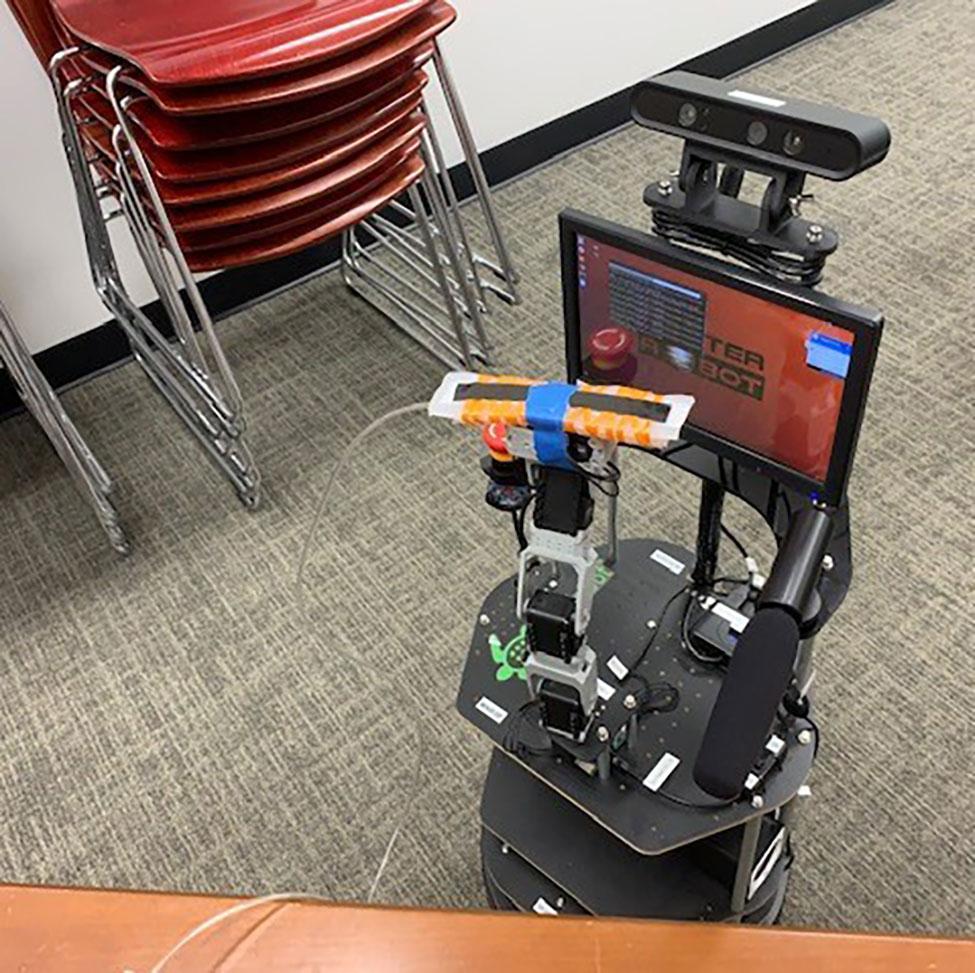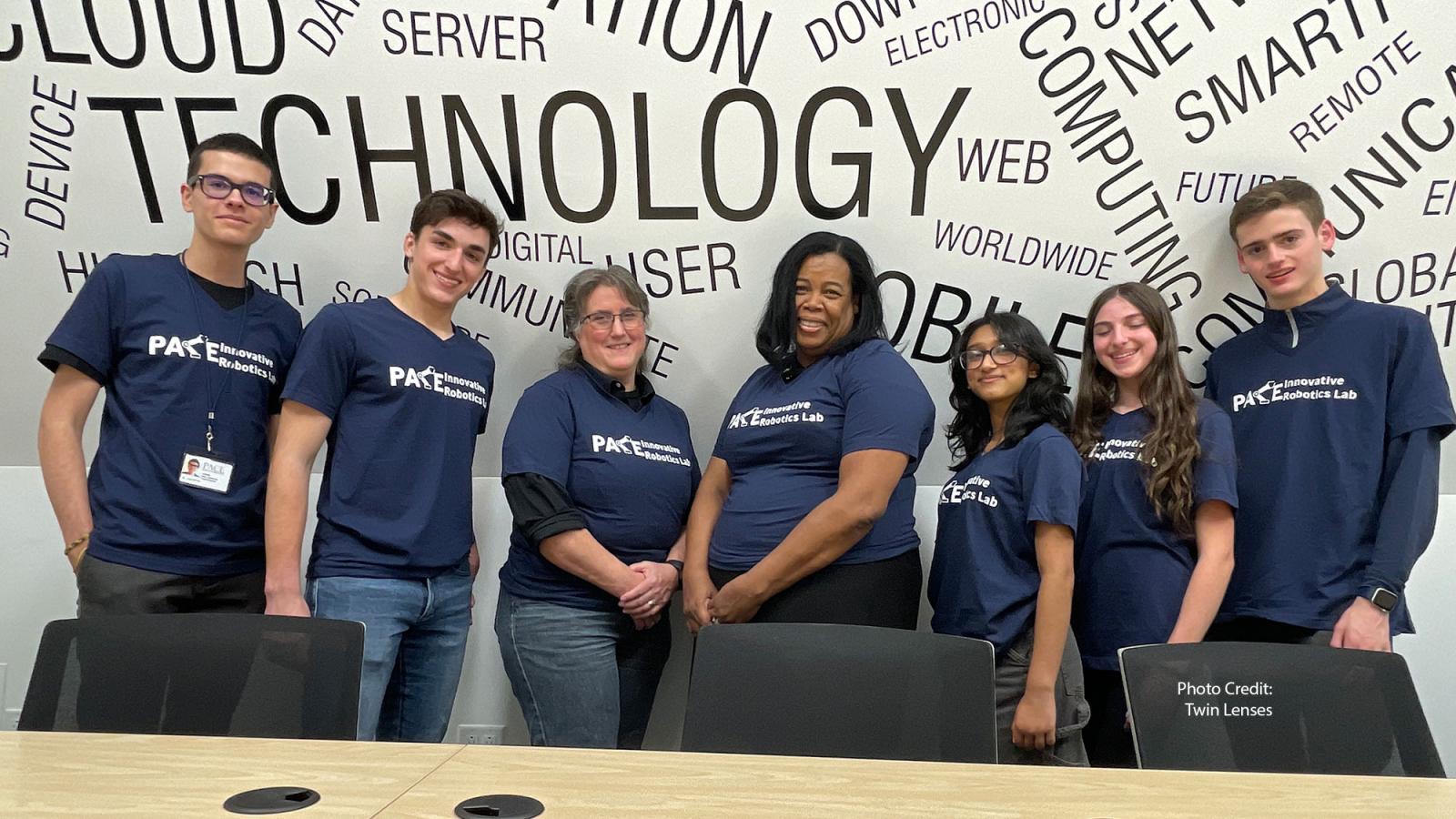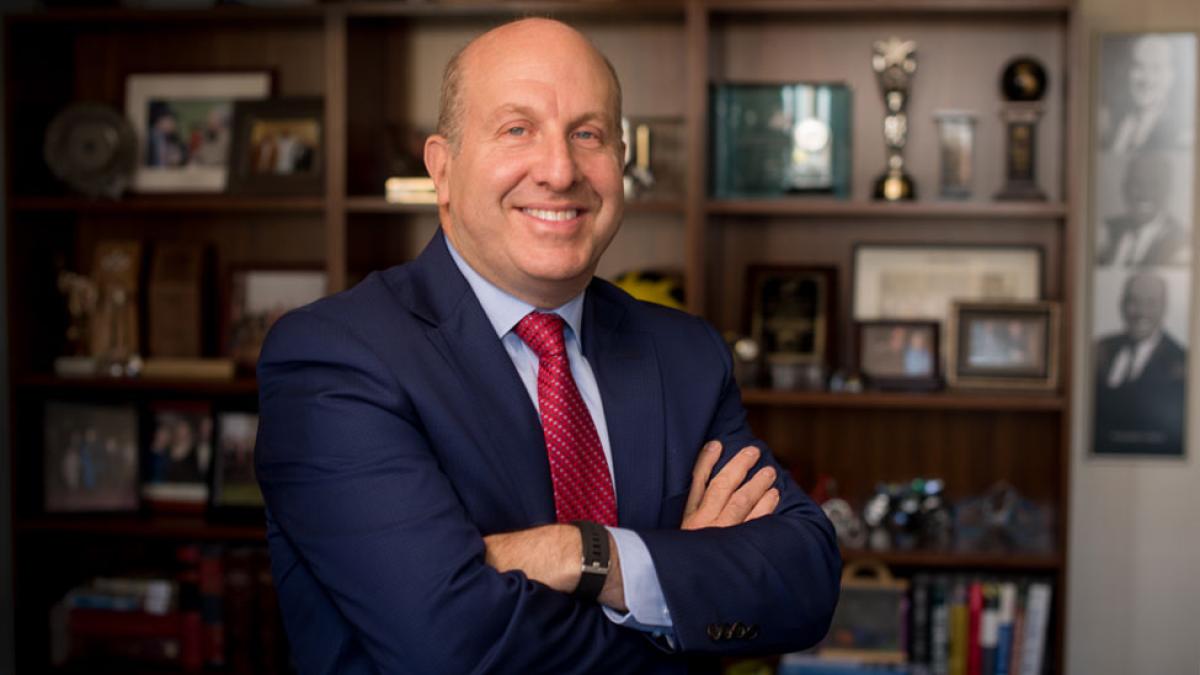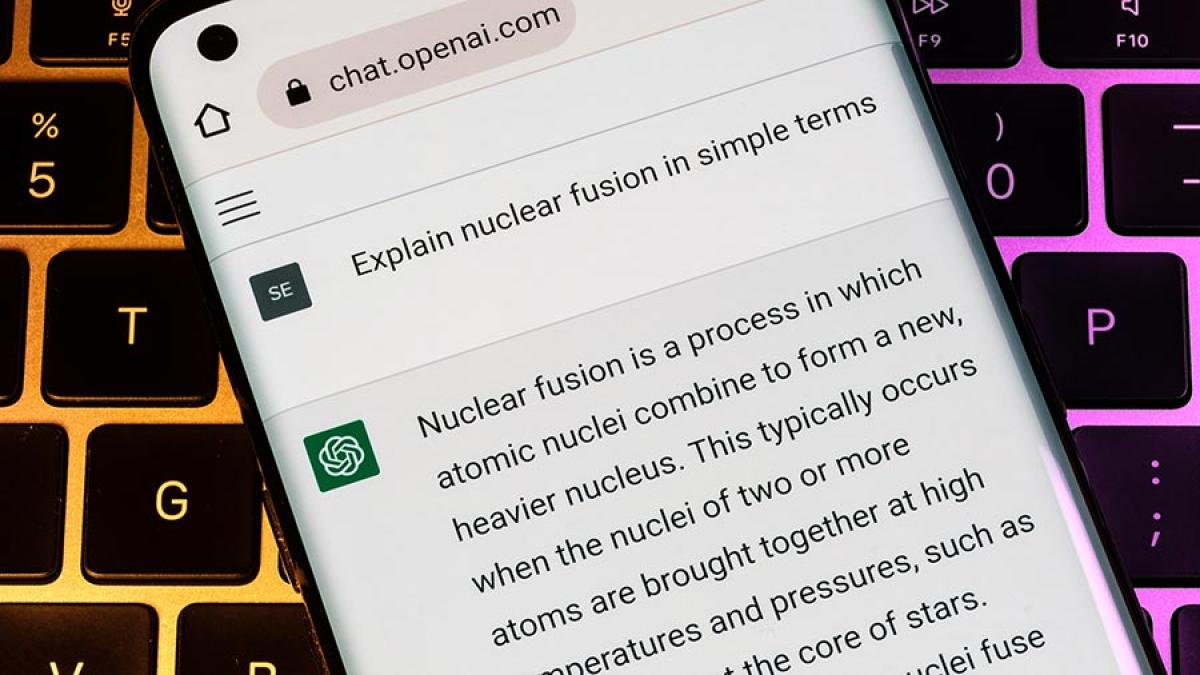
Not Your Ordinary Tour Guide

“The technical name is Jupiter, but we decided to do a spinoff and call it T-Bot—since T-Bone is our mascot.”
Seidenberg Professor of Information Technology Pauline Mosley, DPS is referring to one of the Pace Community’s newest members. T-Bot, as it is affectionally named, is no ordinary robot. In fact, it’s Pace’s newest recruitment tool.
“It started in 2020—that August, I received a Provost scholarly research grant from Pace for around $4,000,” says Mosley. Seidenberg Dean Jonathan Hill was supportive of this initiative and purchased another Jupiter Robot as well as financed training for the research team via Teams from Singapore for a week. “With that, I purchased a Jupiter Robot.”
A Jupiter Robot is an integrated and open artificial intelligence development platform which can be used to develop applications to solve real-world problems—ranging from autonomous navigation, to speech interaction, to much more. In other words, it’s a pretty cool robot.
One of the reasons Mosley was interested in purchasing a Jupiter Robot is she felt it was more collegiate—a launching point for unique collaborative projects, and a means through which Pace students would be able to compete in competitions, both nationally and internationally. Furthermore, it would establish Pace as a leader in robotics—a place in which students from all over the region could congregate to think, geek out, and work on unique research projects.

Which is exactly what has happened. The Pace Robotics Club, led by Mosley and Seidenberg adjunct professors Matt Ganis and Lisa Ellrodt, has essentially emerged as a result of Pace’s acquisition of the Jupiter Robot. A combination of local high school students looking to do advanced robotics research, current Seidenberg students of all levels, as well as faculty members, have coalesced around this exciting new technology.
“That’s how the club got started. It works with gifted high school students from the Westchester County area, it works with our undergraduate students, and graduate and PhD students. It’s a really nice cross-section of intellect that’s working together trying to solve problems,” says Mosley.
“This is the technology of tomorrow—the high-schoolers, undergraduates, and PhD students involved in this club are really going to be solving the issues of today using the technology of tomorrow—that’s a big positive,” added Ellrodt.
The club’s major project is the development of T-Bot—a robot that is designed to behave similar to a tour guide. Currently, T-Bot is programmed to inform its audiences of the many benefits of a Seidenberg education—discussing Seidenberg’s labs, its cybersecurity program, the accomplishments of Cybersecurity Director Li-Chiou Chen, and so much more.
Mosley hopes that T-Bot could be, in addition to a selling point in itself, a vehicle to consistently deliver information that may not typically be offered on a tour. For example, the fact that Seidenberg boasts an above average percentage of women faculty and students, and a robust mentoring network aimed to increase the number of young women in the cybersecurity pipeline.
“We have a lot of tours, we’re always hosting open houses, parents always want to know more about Seidenberg in general. We have great students who do that—sometimes, tour guides are Pace students but not Seidenberg students, who might not know our programs, the individuals in our schools, to really market Seidenberg well. That’s where the idea came to me—if we could get this robot, and take highlights of our school, and have the robot say it—it’d be a complement to a human tour guide, supplementary in that it would represent our school very well,” said Mosley.
While T-Bot’s current focus is on Seidenberg-specific tours, the potential projects and possibilities for T-Bot are endless. For example, Ellrodt is in the early stages of envisioning a collaboration with Seidenberg’s Blue CoLab, a STEM laboratory aimed at innovating real-time water monitoring to improve water quality and overall health, directed by Professor John Cronin.
“Blue CoLab, they have a boat with sensors on it that monitors the environmental information around Choate Pond,” notes Ellrodt. “We thought it’d be really cool to have T-Bot say what those readings are.”
The future is certainly bright for Pace’s Robotics Club. With increased funding, Mosley hopes to be able to assemble a group of talented students to compete in international robotics competitions, and further the influence of Pace through strong relationships with local high schools and high schoolers interested in the field. But more than anything, she is proud of the environment that T-Bot and the Robotics Club have built—one of intellectual curiosity, innovation, and shared community.
“In Westchester, to my knowledge, there doesn’t exist a physical think tank or a hub, where minds can just come hang out and think. Where is there a space where people could further the discipline and push the limits of programming—where do those kids hang out? My goal is to create a space for these inquisitive minds that love to tinker, love to code, love discovery and exploration as well as innovation. I’m looking to create physical and virtual spaces where innovation and experimentation are cultivated and encouraged in a safe environment, monitored by positive faculty and students alike.”
More from Pace
"We’re down to the final stretch of the academic year at Pace University, and it’s turning out to be a really big finish," writes President Krislov in his May message to the community as he discusses Commencement, the Sands School of Performing Arts, and more.
How will ChatGPT and the emergence of AI language models change learning and higher education? Our faculty weighs in.
Ka’ramuu Kush, a faculty member of the Sands College of Performing Arts, is sharing wisdom and experience gained from many years as a working actor, director, and writer with students—and has already made quite an impact.


